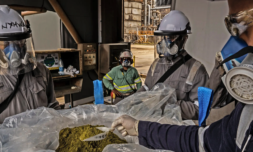‘Earth is a terrible place to make things,’ according to aerospace engineer Andrew Bacon. Here’s how low gravity provides the unique conditions to build high-performance materials which may arm us against climate change.
Finding ways of building sustainable technologies in a sustainable way is a requirement which perpetually limits our fight against climate change. Here’s one ingenious (albeit strange) solution to this problem.
In our endeavours to replace fossil fuels with electric batteries, or to control the energy intensive flow of digital data flowing across continents, we’ve so far come up short. Mining for vital metals like cobalt and nickel is anything but green, and blockchain technology is gobbling up energy at the rate of entire countries.
So, where on Earth do we go from here? Apparently, we don’t.
According to a UK aerospace start-up called Space Forge, the answer to creating many of the materials we need to really push our green tech revolution is to build outside of the Earth’s atmosphere. Come again?
The idea is to use what are effectively mini factories concealed within satellites – and controlled by robotics. These will reportedly be returnable to specific coordinates on Earth, which would negate emissions typically associated with transportation.
Seems a bit of a stretch, doesn’t it? Well, let us convince you.
Space is said to offer several instant advantages when it comes to manufacturing. Low gravity levels, combined with the fact it’s almost a perfect vacuum means that achieving very high and very low temperatures to produce metals, for example, requires far less energy.




















